Wool stands as a testament to the enduring importance of natural fibres in our modern world. Renowned for its versatility, breathability, and sustainability, wool has woven itself into the fabric of our lives in more ways than one.
As a natural insulator, it provides warmth in winter and keeps us cool in summer, adapting to our body's needs. Its moisture-wicking properties draw away sweat, ensuring comfort across varied climates. Beyond functionality, wool is a champion of sustainability, as it is renewable, biodegradable, and produced with minimal environmental impact. The durability of wool also means that products made from it have a longer lifespan, contributing to a reduction in waste.
Merino - good for you and the plant...Naturally!
In a world increasingly focused on sustainability, wool emerges as a shining example of eco-friendly fashion. One of its most remarkable qualities is its biodegradability. Unlike synthetic fibers that linger in landfills for centuries, wool naturally decomposes over time, returning to the earth without leaving a lasting footprint. This inherent biodegradability closes the circular loop in production, ensuring that wool garments can be disposed of responsibly at the end of their lifecycle.
Wool's journey from sheep to garment embodies a sustainable ethos. Sheep graze on natural pasture, converting sunlight and water into a renewable resource: WOOL. It undergoes minimal processing compared to synthetic fibers, reducing energy consumption and environmental impact.
A Shearer hard at work - sheep need to be shorn at least once a year.
Wool's durability extends its lifespan, offering longevity that transcends trends. A well-cared-for wool garment can last for years, passing through multiple owners or finding new life through upcycling or recycling initiatives. Even at the end of its usefulness as clothing, wool can be repurposed into insulation, mulch, or compost.
Wool's unique composition as a protein enables it to biodegrade and be reabsorbed into the earth, where it enriches the soil with magnesium, nitrogen and Sulphur, promoting the growth of new grass that sustains and feeds the sheep in a beautifully cyclical process.
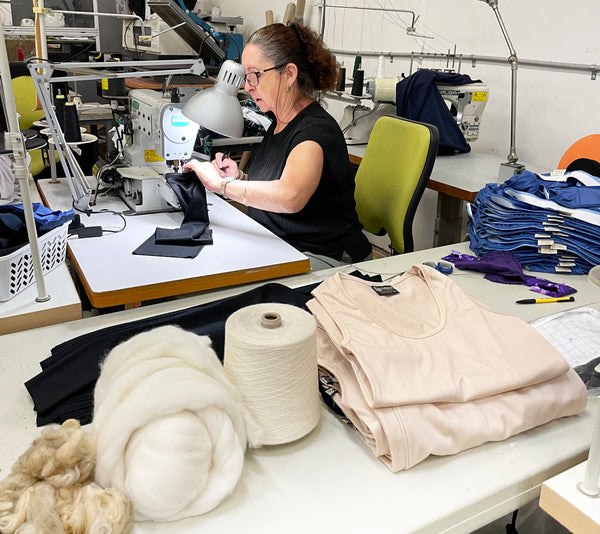 From Raw Wool to Finished Product
From Raw Wool to Finished Product
As consumers become more conscious of their environmental footprint, the appeal of wool clothing continues to grow. Its biodegradability, coupled with its natural origins and durability, make it a cornerstone of eco-friendly fashion. By choosing wool, we not only embrace timeless style and comfort but also contribute to a more sustainable future, where fashion and environmental stewardship go hand in hand. Let's celebrate the enduring beauty and sustainability of wool, weaving a greener, more responsible path forward for the fashion industry and beyond.
Jane Milburn's Fabric Study
Jane Milburn, Slow Fashion advocate, conducted a
study where she tested the biodegradability of synthetic fabrics vs natural fibres. In this experiment she buried a range of synthetic fabrics on one board, and then a range of natural fabrics on another. After one year under dirt and being watered the samples were dug up and. See below the results of before and after:
Synthetic Fibre Swatches
Natural Fibre Swatches
Jane's findings showed that synthetic fibres did not degrade with all samples still recognisable and in whole pieces. Mean while, the natural fibre swatches were mainly gone, particularly the wool and cotton swatches which had biodegraded completely. See the full story
here.
The Campaign For Wool Test
In 2014, The Campaign for Wool conducted a test to see how biodegradable Wool is. His Royal Highness The Prince of Wales, buried 2 jumpers side by side where one was pure Merino wool and the other was synthetic fabric. After 4 months they pulled the jumpers out of the flower bed and in the picture below you can see the results. The top half is the Merino jumper which shows lots of signs of decomposition. Below is the synthetic fabric jumper which has no signs of decomposing. See the experiment
here.
St John's School Wool Experiment
In 2018 in Maniototo, New Zealand, a primary school conducted a wooly experiment to see how a wool vs synthetic jumper would degrade when buried at the school. The wool jumper had a zip and synthetic lining. In 2023 they dug up the results which you can see below! The full synthetic jumper was still intact and just a bit dirty. The wool jumper with the plastic lining was unrecognisable! Only the plastic lining and zip remained as all the wool had returned to the earth and then contributed to fertilising the soil as written by PGG Wrightson who were helping with the experiment. Read their full article
here.

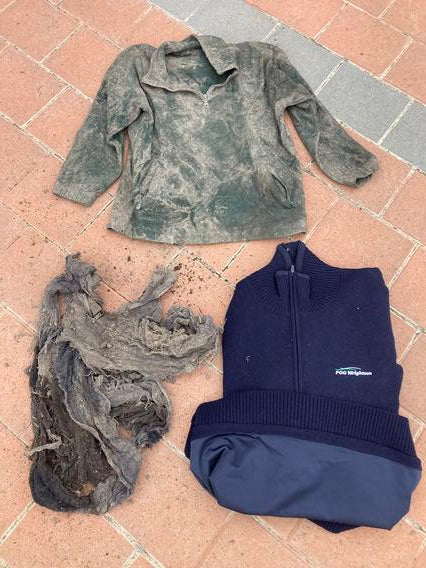
"Wool is a natural and renewable resource. As long as there is grass to eat, sheep will continue to produce wool. When 100% Merino wool fabrics are disposed of, it will naturally decompose in soil in a matter of months or years, slowly releasing valuable nutrients back into the earth. Synthetic fibres, on the other hand, can be extremely slow to degrade and significantly contribute to the world’s overflowing landfills.
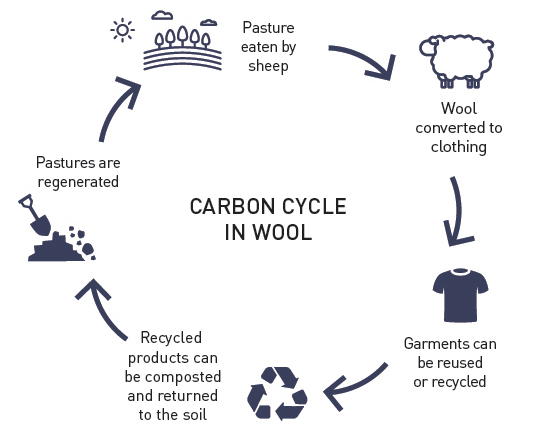
How does wool biodegrade?
All materials of animal and vegetable origin have some degree of biodegradability, meaning that they are capable of being decomposed by the action of living organisms, such as fungi and bacteria.
Wool is composed of the natural protein keratin, which is similar to the protein that makes up human hair. When keratin is broken down naturally by microorganisms, the products do not pose any environmental hazard.
100% Merino wool fabrics can biodegrade by 95% after 15 weeks of burial in soil, but the rate varies with soil, climate and wool characteristics.
Wool readily biodegrades in warm, moist conditions
On disposal, if wool is kept warm and moist or buried in soil, fungal and bacterial growths develop which produce enzymes that digest wool.
On the other hand, thanks to the unique chemical structure of keratin and wool’s tough, water-repellent outer membrane, clean and dry wool fibres do not readily degrade. This allows wool products to be resilient and long-lasting in normal conditions.
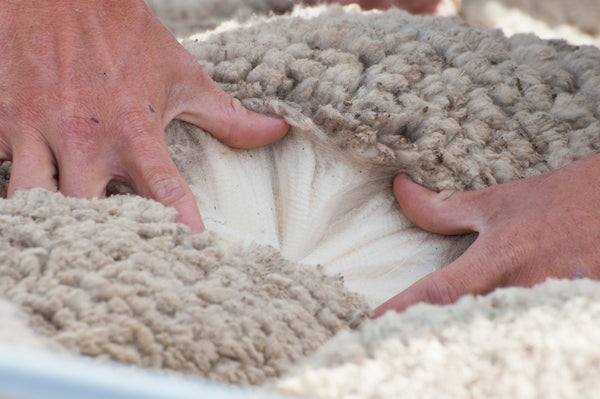
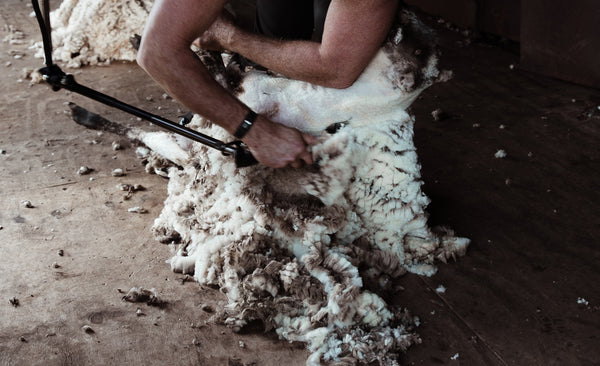
 From Raw Wool to Finished Product
From Raw Wool to Finished Product



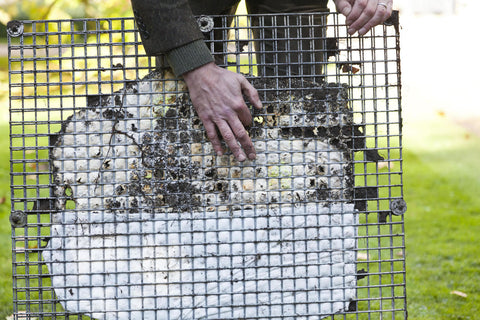





Yes – as you can see from the pictures the dyes do break down and depending on the amount of elastane in the legs and waistband they don’t break down as well. We recommend taking out the elastic when composting.
Hi. So I am wondering about the biodegradability of wool: Are the dyes also breaking down well, or are some colours better than others? And, is the waistband of some of your wundies synthetic? Does it therefore not breakdown well?